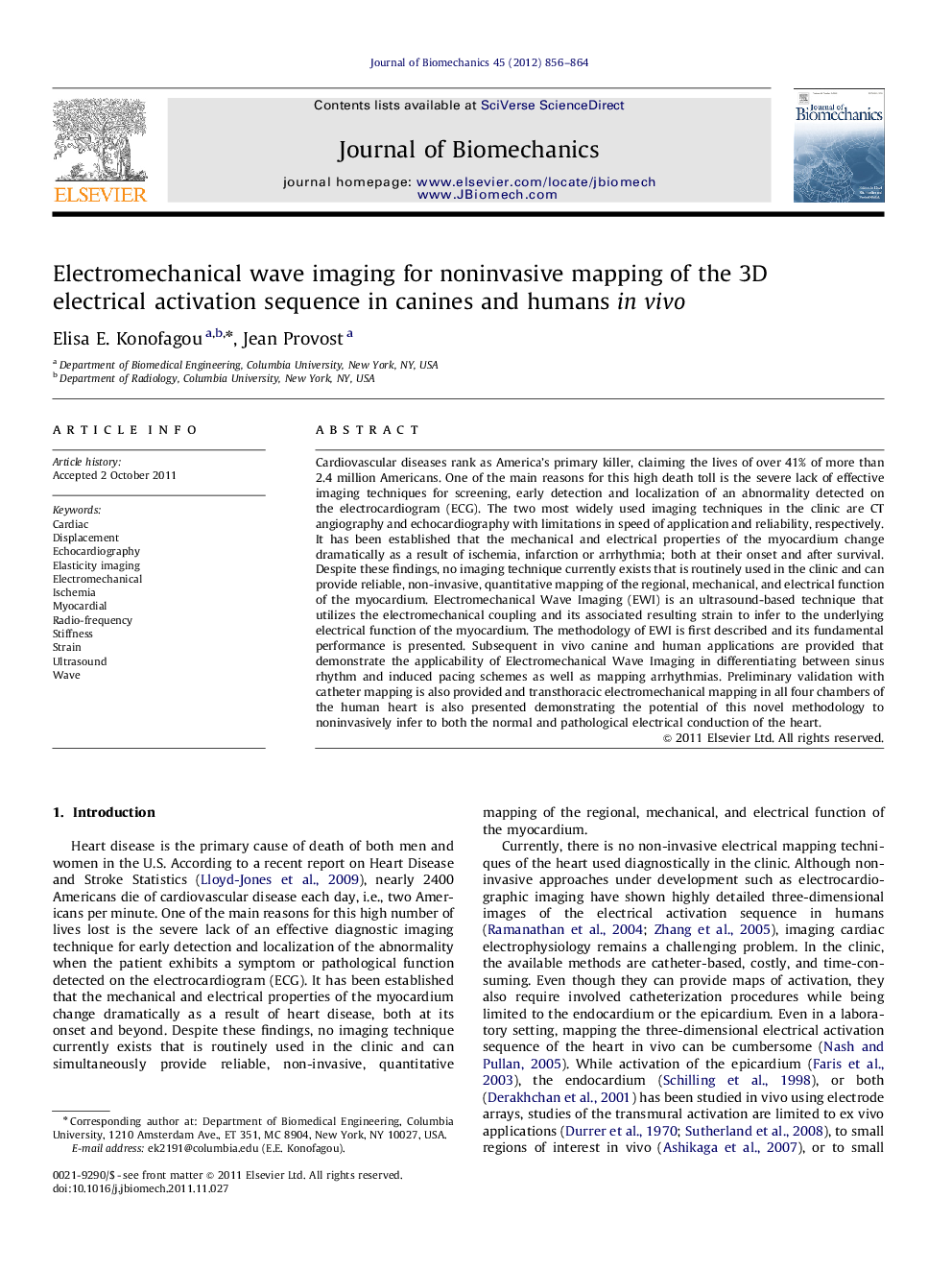| Article ID | Journal | Published Year | Pages | File Type |
|---|---|---|---|---|
| 10432386 | Journal of Biomechanics | 2012 | 9 Pages |
Abstract
Cardiovascular diseases rank as America's primary killer, claiming the lives of over 41% of more than 2.4 million Americans. One of the main reasons for this high death toll is the severe lack of effective imaging techniques for screening, early detection and localization of an abnormality detected on the electrocardiogram (ECG). The two most widely used imaging techniques in the clinic are CT angiography and echocardiography with limitations in speed of application and reliability, respectively. It has been established that the mechanical and electrical properties of the myocardium change dramatically as a result of ischemia, infarction or arrhythmia; both at their onset and after survival. Despite these findings, no imaging technique currently exists that is routinely used in the clinic and can provide reliable, non-invasive, quantitative mapping of the regional, mechanical, and electrical function of the myocardium. Electromechanical Wave Imaging (EWI) is an ultrasound-based technique that utilizes the electromechanical coupling and its associated resulting strain to infer to the underlying electrical function of the myocardium. The methodology of EWI is first described and its fundamental performance is presented. Subsequent in vivo canine and human applications are provided that demonstrate the applicability of Electromechanical Wave Imaging in differentiating between sinus rhythm and induced pacing schemes as well as mapping arrhythmias. Preliminary validation with catheter mapping is also provided and transthoracic electromechanical mapping in all four chambers of the human heart is also presented demonstrating the potential of this novel methodology to noninvasively infer to both the normal and pathological electrical conduction of the heart.
Keywords
Related Topics
Physical Sciences and Engineering
Engineering
Biomedical Engineering
Authors
Elisa E. Konofagou, Jean Provost,
